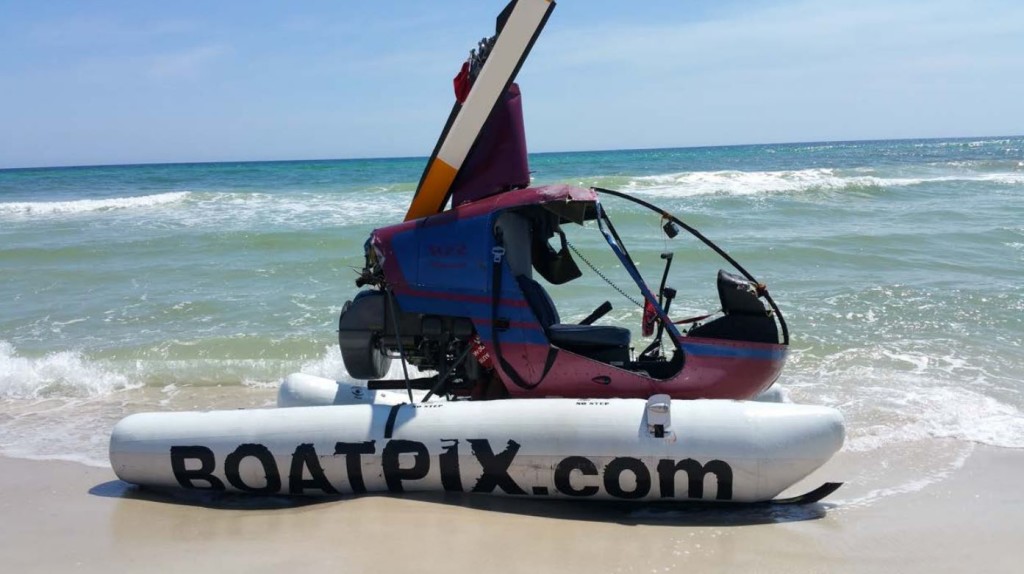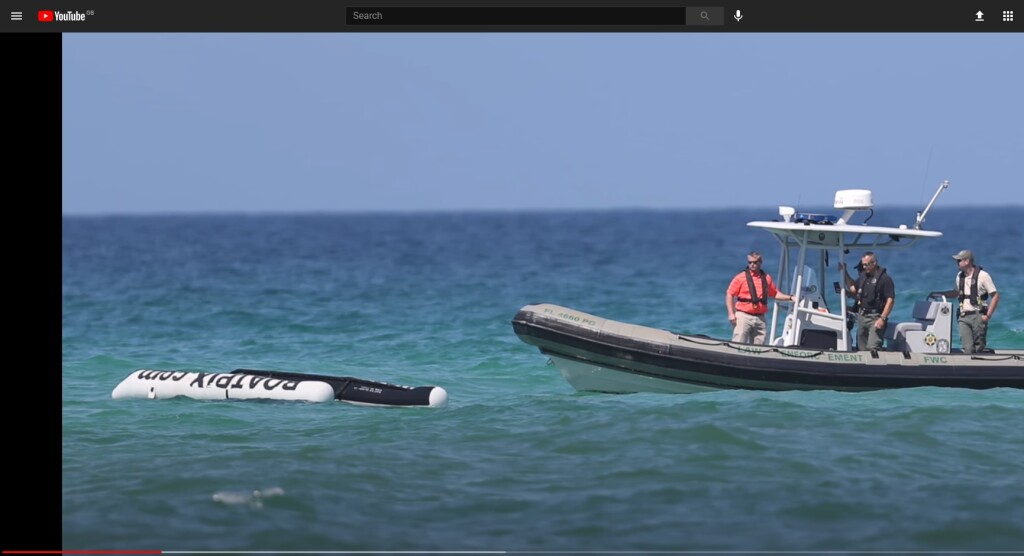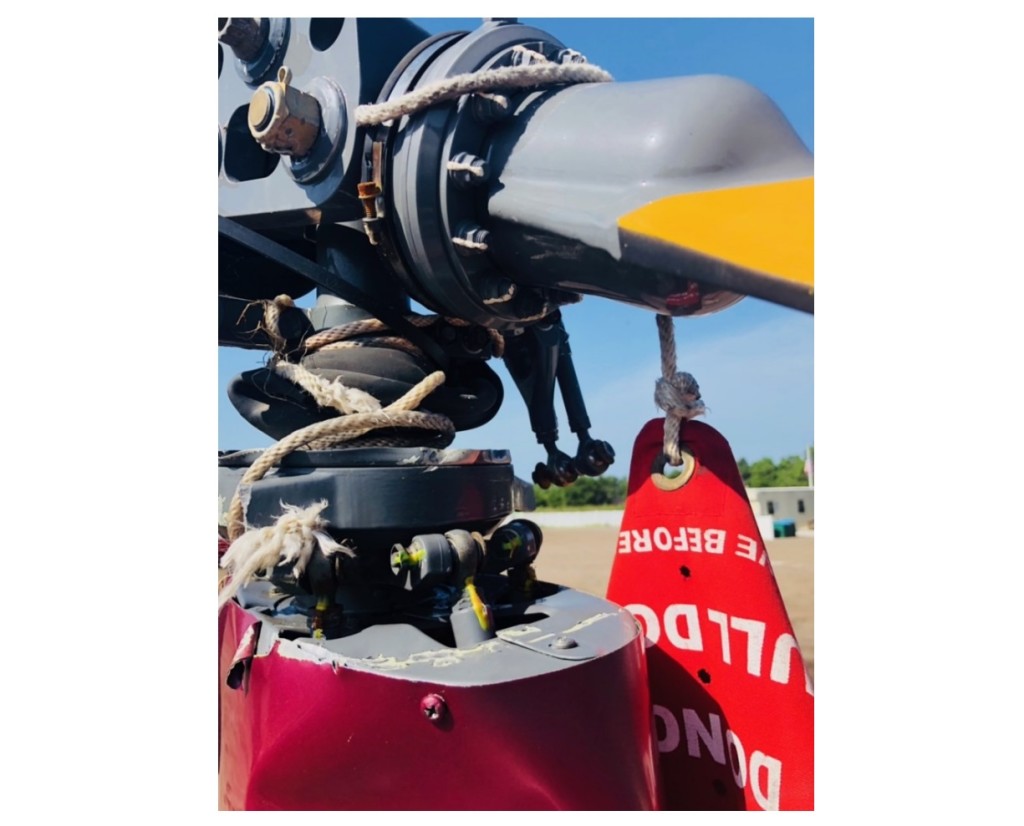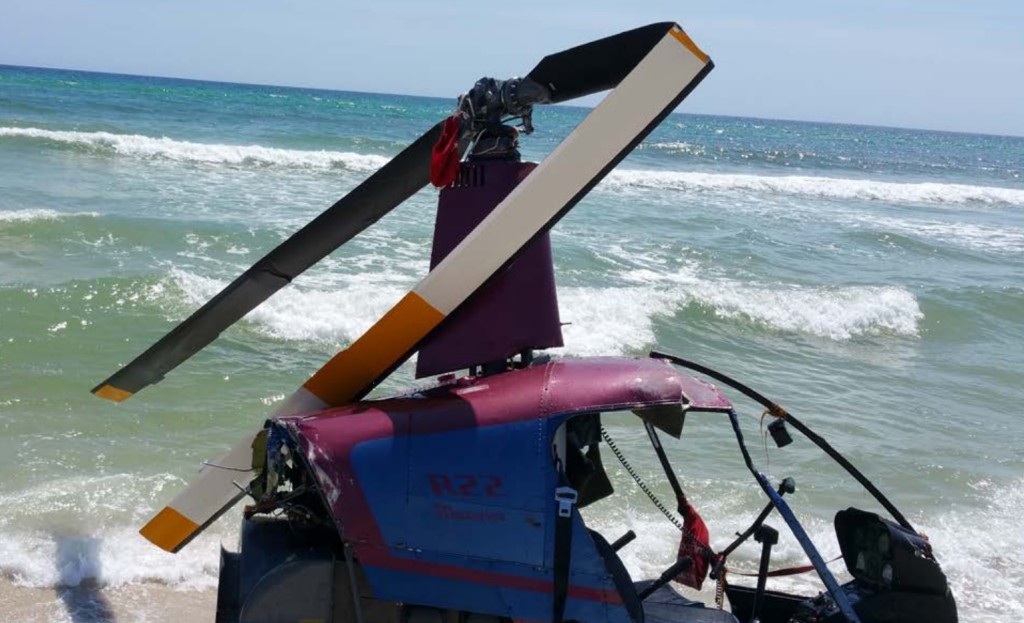Troublesome Tiedowns: The Sequel
On 2 May 2018, float-equipped Robinson R22 helicopter N923SM of Helicopter Academy LLC was in cruise at 80 knots and 800 ft about half a mile off Panama City Beach, Florida, when it slowly started losing airspeed. The pilot, the sole occupant, pushed the cyclic control forward until he reached the forward stop, but the airspeed continued to decrease and the helicopter began to lose altitude. Another helicopter was flying in formation during this positioning flight and observed N923SM’s speed drop to from 80 to 30 knots in about 15 seconds.
The helicopter ultimately impacted the water tail boom first. The helicopter rolled inverted after being struck by waves almost immediately and the pilot clung to the floats until rescued with minor injuries.
Safety Investigation
The US National Transportation Safety Board (NTSB) say in their safety investigation report:
Postaccident examination of the helicopter revealed that the main rotor blades were deformed, the fuselage was substantially damaged, and the tail boom was partially separated.
Further, the ropes used to tie down the helicopter’s main rotor blades were found wrapped around the rotor head swashplate and pitch control rods.
They explain that:
Before the flight, the pilot conducted a preflight inspection of the helicopter, which would have included removing the rotor blade tie-down ropes and associated socks that cover the rotor blade tips and storing them under the cockpit seat. However, because the ropes were found wrapped around the swashplate and pitch control rods, it is likely that the tie-down ropes were not properly removed and secured and, at some point during the flight, became entangled with the swashplate and pitch control rods, which prevented the pilot from being able to effectively control the pitch of the helicopter.
There are no written procedures for tie down ropes and storage procedures. Its taught verbally. …the pilot removed the tie down ropes and thought he placed them under the left cockpit seat storage container. He was not distracted and does not remember placing the tie downs anywhere else.
The flight was without doors, so any loose items could have departed the aircraft.
…the pilot held a commercial pilot certificate with a rating for rotorcraft-helicopter as well as a flight instructor certificate with a rating for rotorcraft-helicopter. The pilot reported 467.7 total hours of flight experience [all in the R22].
NTSB Probable Cause
The pilot’s failure to properly remove and secure the tie-down ropes during the preflight inspection, which resulted in the ropes becoming entangled in the rotor head swashplate and pitch control rods during flight and the subsequent loss of pitch control.
Safety Resources
We have previously discussed Troublesome Tiedowns:
- On 21 October 2015 Bell 206B N1060C attempted a take-off from Fishing Vessel Majestic Sun off Christmas Island, Kiribati in the Pacific for a fish spotting flight, but a tie down remained attached.
- On 30 October 2015, N420PH, a Bell 407 of PHI, lost most of one rotor blade in an accident on an offshore installation in the Gulf of Mexico.
We have also discussed debris being lost from aircraft: Tool Bag Takes Out Tail Rotor: Fatal AS350B2 Accident, Tweed, ON
The adequacy of pre-flight inspections was a factor in these previous occurrences we have discussed:
- When Habits Kill – Canadian MD500 Accident
- EC120 Forgotten Walkaround
- Fuel Exhaustion Causes Emergency Landing
- Flawed Post-Flight and Pre-Flight Inspections Miss Propeller Damage
- UPDATE 10 July 2019: Fatal B206L3 Cell Phone Discount Distracted CFIT
- UPDATE 25 April 2020: Fatal R44 Loss of Control Accident: Overweight and Out of Balance
- UPDATE 7 May 2022: Loose Clothing Downs Marijuana Survey Helicopter
We have previously written:





Recent Comments